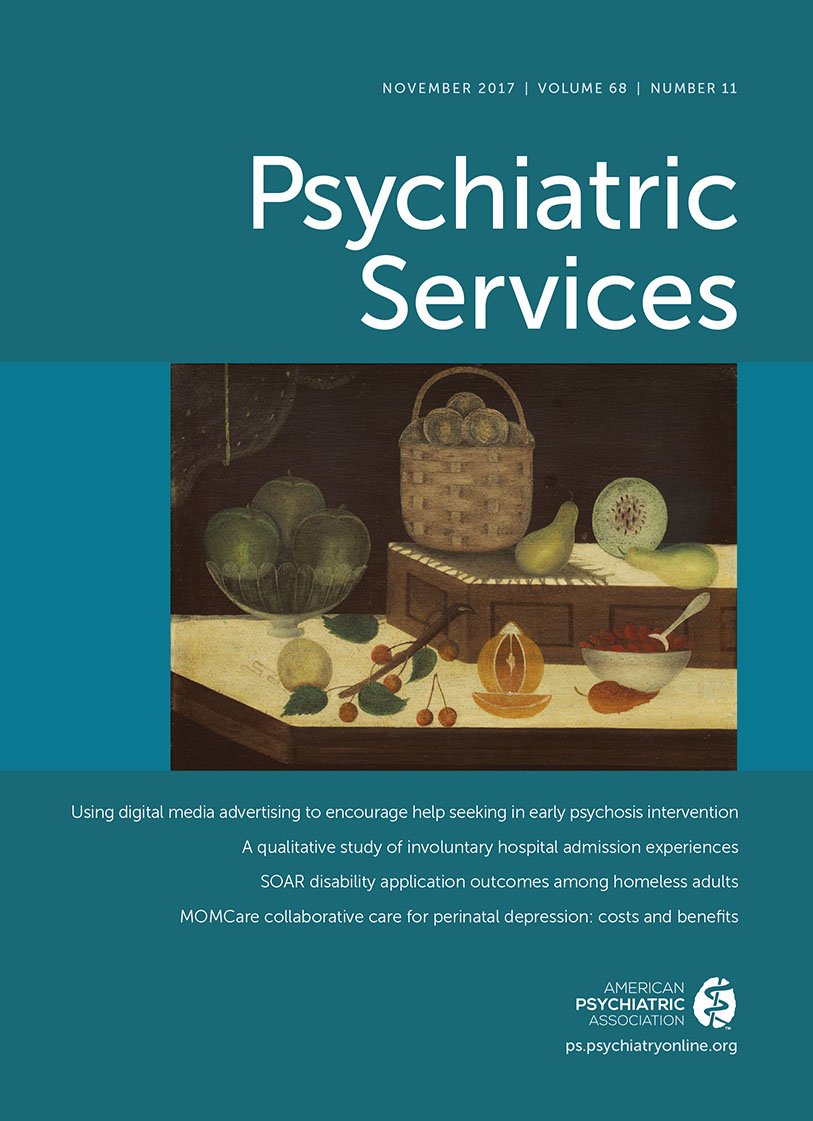Prevalence of Psychotherapy Surrounding Initiation of Psychotropic Polypharmacy in the Medicaid-Insured Population, 1999–2010
Abstract
Objective:
This research aimed to quantify the prevalence of psychotherapy among Medicaid-insured patients within six months of initiating psychotropic medication polypharmacy (PMP).
Methods:
Using the Medicaid Analytic eXtract database for 29 states from 1999 to 2010, investigators established ten two-year cohorts of pediatric and adult patients who received two or more psychotropic drugs with a 45-day overlapping days’ supply. Among PMP initiators, the prevalence of psychotherapy services, identified from encounter claims via Current Procedural Terminology and Healthcare Common Procedure Coding System codes, was calculated for the six months before and the six months after initiation of PMP.
Results:
PMP prevalence varied from 21.2% to 27.7% and from 48.5% to 58.0% in pediatric and adult Medicaid-insured patients, respectively. Among pediatric patients who started PMP (N=397,728), the proportion who had received psychotherapy before PMP varied from 21.0% in the 1999–2000 cohort to 40.0% in 2005–2007. After PMP initiation, psychotherapy prevalence was higher, with estimates ranging from 25.4% in 1999–2000 to 44.1% in 2005–2007. Among adults (N=773,205), the prevalence of psychotherapy after PMP initiation ranged from 12.6% in 1999–2001 to 19.25% in 2003–2005. Psychotherapy prevalence prior to PMP initiation varied greatly across states.
Conclusions:
Although the prevalence of psychotherapy provided immediately before and after initiation of psychotropic polypharmacy has slightly increased in the past decade, it remains low among Medicaid-insured patients, particularly among adults. Reasons for variation in psychotherapy utilization across states deserve further exploration.



